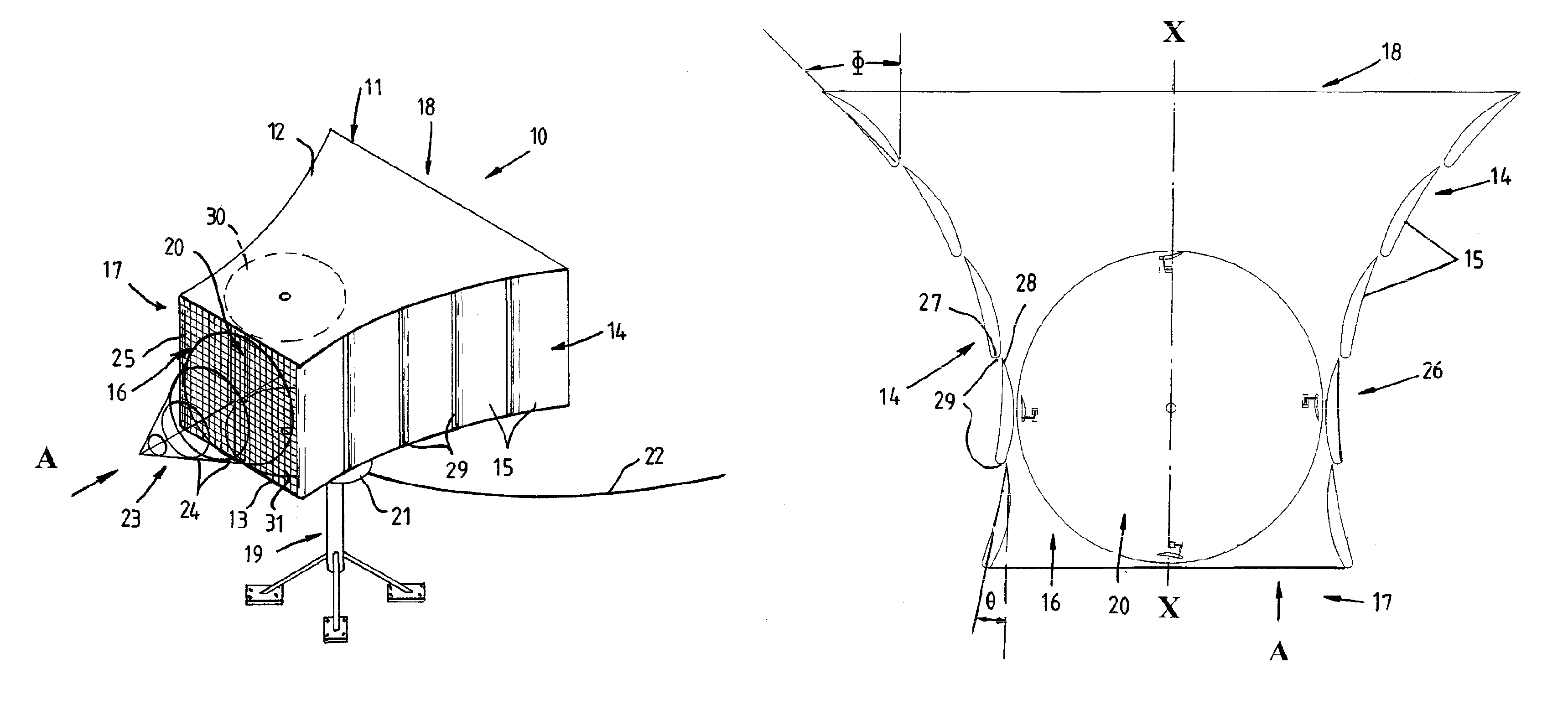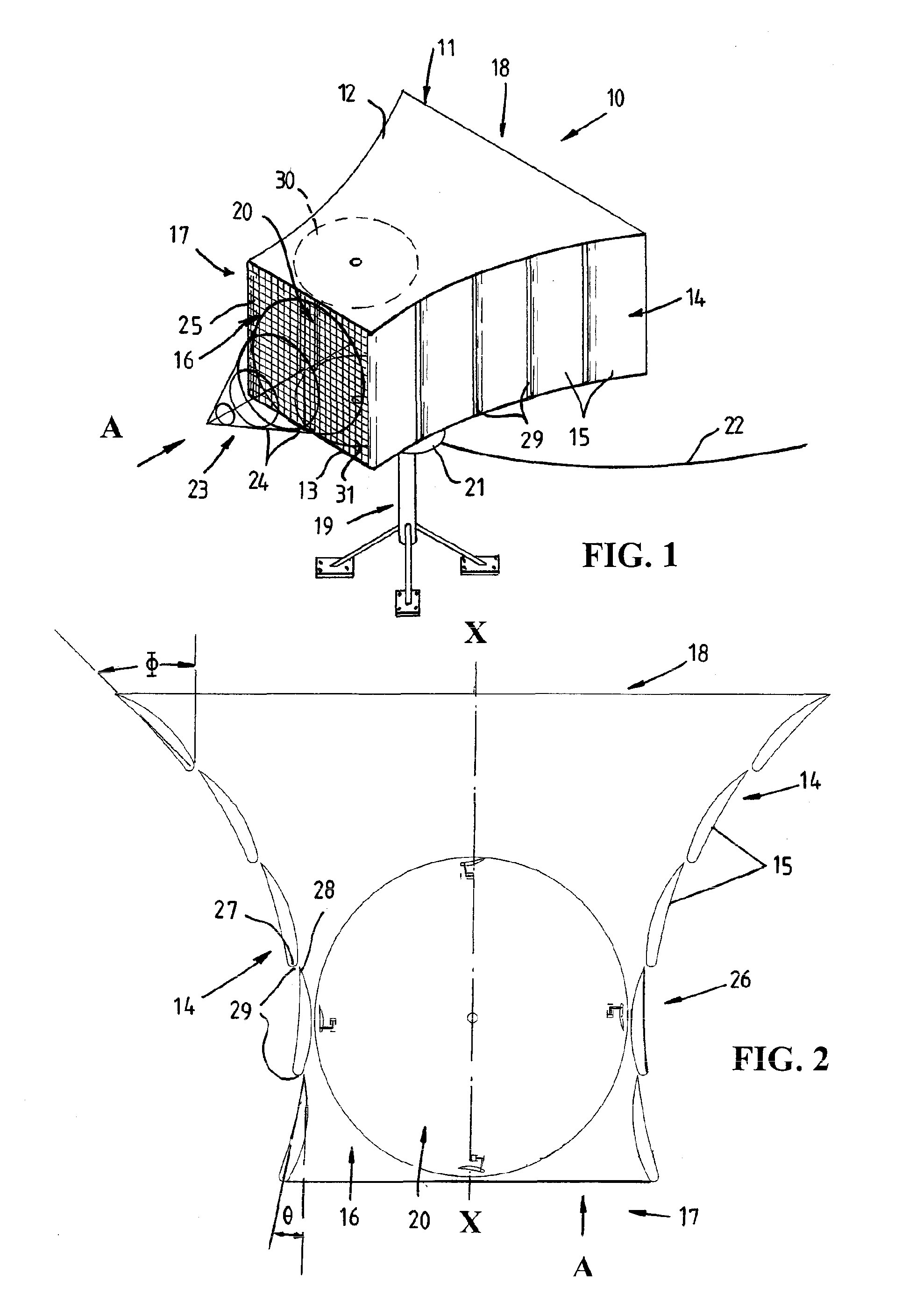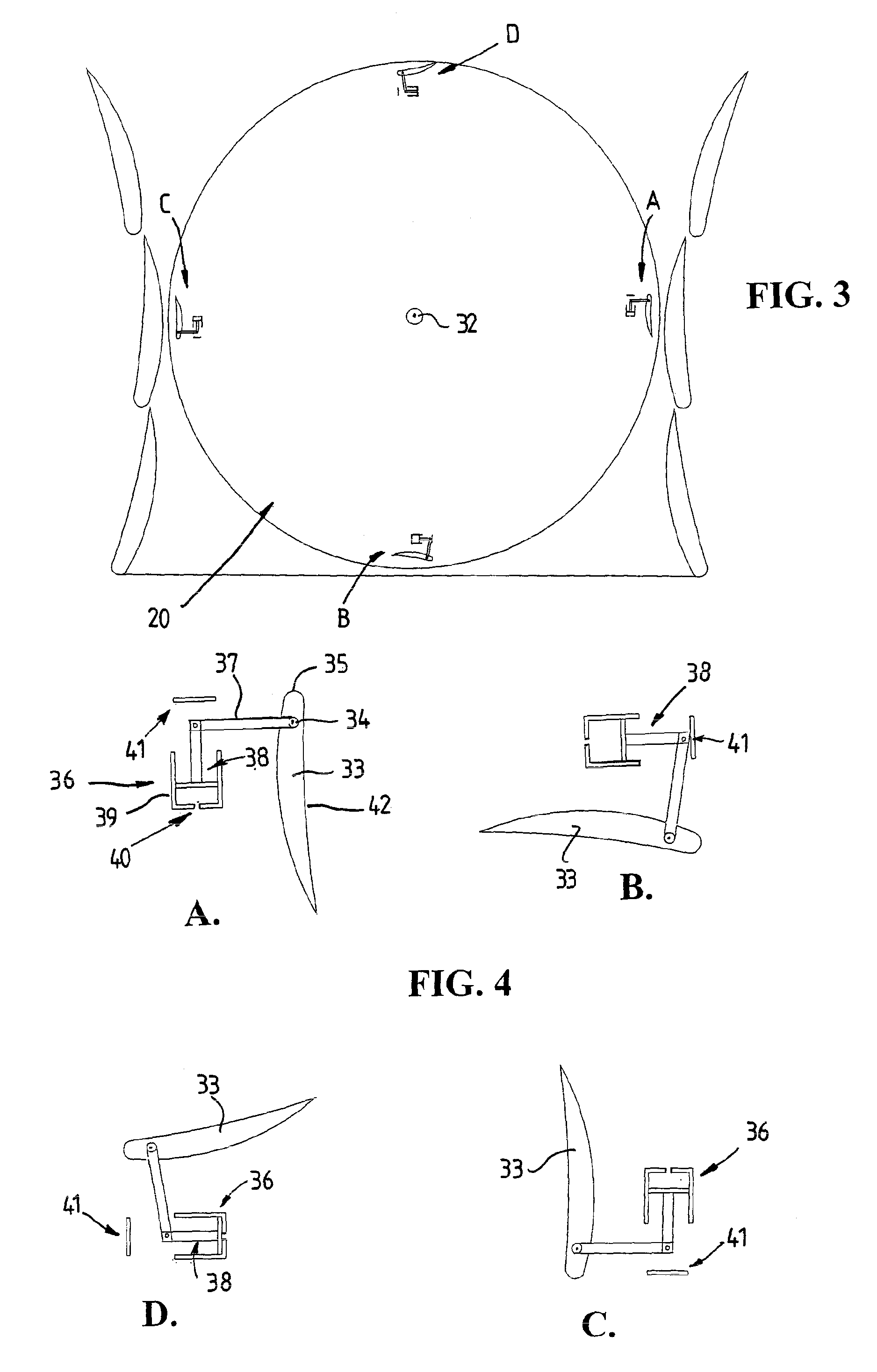Extracting energy from flowing fluids
a technology of flowing fluids and energy, applied in water-power plants, climate sustainability, specific program execution arrangements, etc., can solve the problems of negative environmental impact, large and costly prime mover, and difficulty in harnessing energy, so as to increase the pressure drop across the prime mover
- Summary
- Abstract
- Description
- Claims
- Application Information
AI Technical Summary
Benefits of technology
Problems solved by technology
Method used
Image
Examples
Embodiment Construction
[0036]Referring firstly to FIG. 1, there is illustrated fluid energy extraction apparatus 10 according to an embodiment of the invention submerged within a flowing fluid for example within a river, the direction of flow of which is indicated by the arrow A. The apparatus 10 includes a diffuser 11 having top and bottom planar walls 12 and 13 and opposite side walls 14 defined by a plurality of linear aerofoil section members 15 of constant cross section which extend between the top and bottom walls 12 and 13 and which have their leading and trailing edges extending linearly and substantially at right angles to the planar walls 12 and 13. The diffuser 11 thus defines a flow passage 16 of substantially rectangular cross section but which varies in dimensions between a leading inlet 17 and trailing outlet 18 of the diffuser 11.
[0037]The diffuser 11 is mounted on a pedestal 19 for rotation about a substantially vertical axis such that the diffuser 11 may automatically adjust to the direc...
PUM
 Login to View More
Login to View More Abstract
Description
Claims
Application Information
 Login to View More
Login to View More - R&D
- Intellectual Property
- Life Sciences
- Materials
- Tech Scout
- Unparalleled Data Quality
- Higher Quality Content
- 60% Fewer Hallucinations
Browse by: Latest US Patents, China's latest patents, Technical Efficacy Thesaurus, Application Domain, Technology Topic, Popular Technical Reports.
© 2025 PatSnap. All rights reserved.Legal|Privacy policy|Modern Slavery Act Transparency Statement|Sitemap|About US| Contact US: help@patsnap.com



